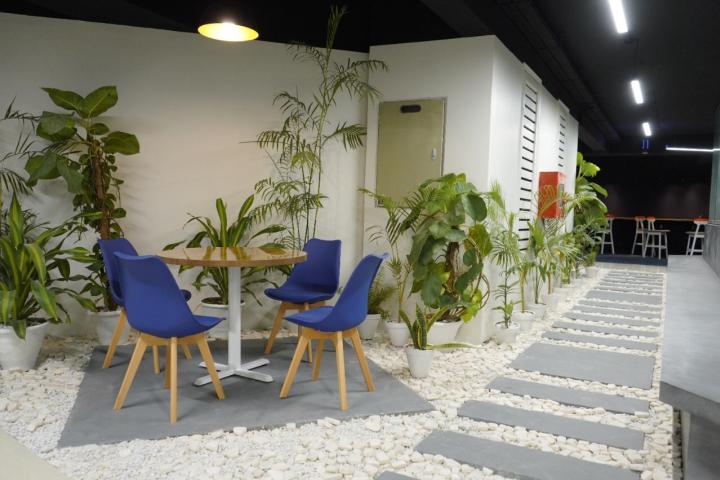In construction, transportation, industry and other fields, the waterproof properties of materials have a significant impact on the safety and service life of infrastructures. In the last few years, a high-performance material, FRP (Fiber Reinforced Plastic), has been attracting attention due to its lightweight, high strength, and anticorrosive characteristics. But a lot of users still have questions popping up in their heads – Is FRP waterproof? In this blog, you will fully understand the waterproof principle, key factors, application and so on of FRP!
The Core of FRP's Waterproof Performance: Materials and Processes
The waterproof ability of FRP stems from its unique material combination and production process.
The Key Role of the Resin Matrix
The core component of FRP is resin (polyester, vinyl ester, epoxy, etc.) and reinforcing agent (glass fiber, carbon fiber, etc.). The resin bonds together the fibers to provide the composite with integral one-piece construction and a dense resinous outer layer which inhibits the passage of water. For example, the high-performance vinyl ester resin used by NHC can withstand long-term erosion from a humid environment and is great in offering super chemical corrosion resistance.
The Structural Advantages of Reinforcing Fibers
Fiberglass or carbon fibers are added to the resin in a matrix that is either directional or interwoven, creating an extremely solid structure. This configuration not only enhances the mechanical properties but also decreases the water penetration passages due to the compact structure of fibers. For instance, the NHC FRP panel guarantees the surface without pores by optimizing fiber lamination design, which enhances the waterproof effect a lot.
Surface Treatment and Coating Technology
The surface procession (like polishing, plating) and waterproof coatings (like polyurethane, epoxy resin) which were applied in the FRP products is able to promote the waterproofing. NHC's FRP I beam is treated with water-proof coating as multiple layers before leaving the factory. Its surface is polished, UV-resistant and good for high-humidity environments, for example, outdoor bridges.
Practical Verification of FRP's Waterproof Performance
The waterproof ability of FRP can be intuitively reflected through structural design and application scenarios.
Seamless Design and Anti-Leakage Performance
Ordinary metal materials are easy to rust and leak due to seams, while FRP can realize one-time molding through compression molding, eliminating the weak point of the seam. For instance, NHC's FRP products, such as storage tanks and pipes, apply a seamless technology, ensuring no leak after a long time running.
Durability in Complex Environments
In corrosive environments such as marine engineering and chemical plants, the salt-fog resistance and acid-alkali resistance of FRP make its waterproof service life far exceed that of metal materials. The NHC FRP panel was once utilized for a coastal sewage treatment facility. For 20 years in use and it continues to stand the test of time without corrosion or water seepage.
Temperature Adaptability
The coefficient of thermal expansion of FRP is close to that of concrete. It's difficult to generate cracks when the temperature changes, avoiding water infiltration. NHC FRP I beam is commonly used for the reinforcement of buildings in the cold regions where the temperature difference is great in the north, effectively solving the problem of traditional materials water seepage due to hot and cold shrinkage.
Diverse Waterproof Applications of FRP Products
FRP products in different forms can meet the waterproof needs of various scenarios.
The FRP Panel: A Perfect Solution for Building Waterproofing
As walls and roofs, FRP panels, whose convenience is lightweight but have high strength, have been widely adopted in big stadiums and large factories. It can be added anti-slip textures or a higher drainage degree to enhance the waterproof effect.

FRP I beam: The Shield of Bridges and Tunnels
For bridge piers or tunnel units, FRP I beam possesses double protection against groundwater attack and chemical erosion with internal fiber strengthening and outside coatings.

Customized Solutions
Providing a full-chain service from design to construction, NHC can customize FRP products according to customer requirements. For example, an anti-condensation coating can be applied to the surface of FRP in high-humidity factories, while in chemical plants, a strong acid-resistant resin matrix is used to implement comprehensive waterproofing.
Conclusion: Choose NHC to Unlock the Waterproof Potential of FRP
The waterproofing of FRP is no coincidence; technology and process changes have brought it about. Every link, from resin selection to structure design, is closely related to the final effect. NHC has been deeply involved in research and development in the FRP field for many years. With a sound quality control system and intimate service, it offers customers high-quality FRP product solutions with more cost-effectiveness. Whether you’re looking for an FRP panel, an FRP I beam, or even some really complex moldings, NHC has the capability to achieve the required waterproofing and structural security you demand.









